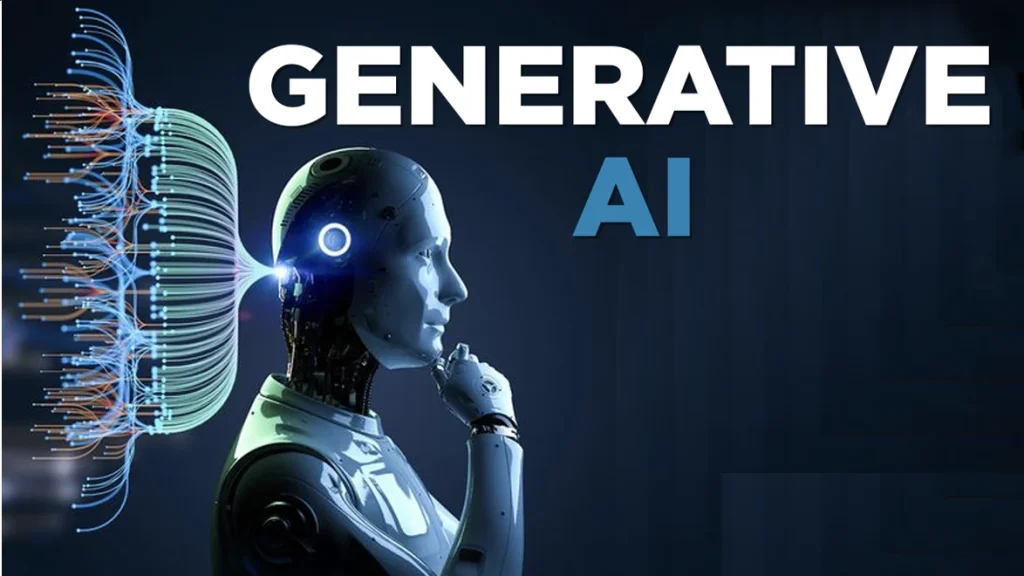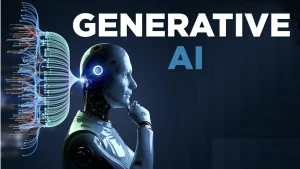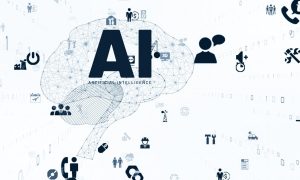The education landscape is changing rapidly. AI tools are becoming essential for modern educators. I’ve seen firsthand how these technologies transform learning environments. Teachers who embrace AI gain valuable time and resources. Students benefit from personalized learning experiences tailored to their needs. AI isn’t replacing teachers but amplifying their capabilities. Let’s explore AI technologies that are reshaping education. We’ll examine their benefits, limitations, and practical applications. This knowledge will help you select the right tools for your classroom.
AI Types
Understanding different AI types helps educators choose appropriate tools. Not all AI serves the same purpose in educational settings. Each type offers unique benefits for specific academic needs. Let’s examine three main categories relevant to education.
Generative AI

Generative AI creates original content based on patterns in training data. This type of AI produces text, images, audio, or video from prompts. Tools like ChatGPT, DALL-E, and Midjourney fall into this category.
In education, generative AI helps create lesson plans and instructional materials. Teachers use these tools to develop writing prompts and discussion questions. Students can use generative AI to brainstorm ideas for projects.
Generative AI works best when educators provide clear, specific prompts. The quality of output depends on how well you communicate your needs. Always review AI-generated content for accuracy before sharing with students.
Predictive AI
Predictive AI analyzes data to forecast outcomes and identify patterns. This technology uses historical information to make informed predictions. In education, predictive AI helps identify at-risk students early.
Predictive models analyze student performance data across multiple dimensions. They spot struggling students before traditional assessments might reveal issues, and teachers receive alerts about potential learning gaps or engagement problems.
These systems help educators allocate resources where they’re most needed. Intervention strategies become more targeted and effective, and student success rates improve through proactive support systems.
Content Moderation
Content moderation AI filters inappropriate material from digital learning environments. This technology identifies and blocks harmful content in real time so students can safely access online resources without exposure to inappropriate material.
These systems scan text, images, and videos for problematic content. When necessary, they flag potential issues for human review. Content moderation creates safer digital spaces for learning.
Schools use content moderation AI to monitor online discussions and forums. The technology ensures respectful communication between students. It helps maintain positive learning environments free from bullying or harassment.
Key Areas for AI Tools in Education
AI tools serve multiple functions in educational settings. Understanding these applications helps teachers implement technology strategically. Let’s explore three key areas where AI makes a significant impact.
Classroom Management
AI simplifies classroom management through automated systems and insights. Tools like ClassDojo and Edmodo use AI to track student behavior. They provide real-time feedback on classroom dynamics.
These platforms gamify positive behaviors through point systems and rewards. Students engage more actively with clear behavioral expectations, and teachers spend less time on discipline and more on instruction.
AI-powered attendance systems eliminate manual roll calls. Automated reminders help students submit assignments on time, and schedule optimization ensures efficient use of classroom time.
Some systems even analyze noise levels and group interactions. They provide data on classroom engagement throughout lessons. Teachers adjust their approaches based on these insights.
Content Generation and Research Tools
AI content tools help teachers create engaging instructional materials quickly. Research assistants help students find reliable information efficiently. These tools save time while improving educational quality.
Teachers use AI to generate custom worksheets and assessments. The technology adapts materials to different reading levels automatically. Content creation becomes less time-consuming and more effective.
Students benefit from AI research tools that summarize complex texts. These platforms highlight key information from multiple sources, improving critical thinking as students evaluate AI-generated summaries.
Grading and Assessment

AI streamlines grading processes for more efficient feedback cycles. Automated systems evaluate objective assessments instantly, allowing teachers to focus on providing qualitative feedback where it matters most.
Multiple-choice and fill-in-the-blank questions receive immediate scoring. Essay grading tools provide initial feedback on structure and content. Teachers review AI assessments before finalizing grades.
These systems identify common misconceptions across student submissions. They highlight areas where instruction may need reinforcement. Data-driven insights inform teaching strategies effectively.
Assessment AI adapts question difficulty based on student performance. This creates more accurate measurements of student understanding, and progress tracking becomes more detailed and actionable.
Key Considerations When Picking AI Tools for Education
Selecting appropriate AI tools requires careful evaluation. Several factors determine whether a tool will meet educational needs. Consider these important aspects before implementation.
Data Privacy and Security
Student data protection must be the top priority. Before using AI tools in the classroom, review their privacy policies to ensure compliance with educational data protection regulations.
Many educational AI tools collect substantial student information. Understand what data is gathered and how it’s used. Choose vendors committed to transparent data practices.
Secure platforms use encryption and regular security updates. They limit data sharing with third parties, ensuring that student information remains confidential and protected.
Parental notification about AI tool usage is often required. Clear communication builds trust in technology implementation. Address concerns proactively before they become issues.
Ease of Implementation
User-friendly interfaces increase adoption rates among teachers. Look for tools requiring minimal technical expertise. Training requirements should be reasonable for busy educators.
Integration with existing systems simplifies implementation. Compatible tools work with current learning management platforms, reducing disruption during technology transitions.
Support resources should be readily available for users. Documentation, tutorials, and responsive customer service matter. Teachers need help when technical issues arise.
Pilot programs allow testing before full-scale implementation. Small-group trials identify potential problems early. Gradual rollout strategies typically prove most successful.
Alignment with Educational Goals
AI tools must support established curriculum objectives. Technology should enhance rather than distract from learning. Evaluate how tools connect to educational standards.
Consider how AI addresses specific challenges in your setting. Tools should solve real problems faced by teachers or students. Avoid implementing technology without a clear purpose.
Customization options allow adaptation to specific needs, and adjustable features accommodate different teaching styles. The best tools flex to fit educational approaches.
Evidence of effectiveness matters when selecting AI tools. Look for research supporting educational benefits. Data-backed results provide confidence in implementation decisions.
Benefits of AI in Education
When implemented thoughtfully, AI offers significant advantages. These benefits extend to students, teachers, and entire educational systems. Let’s explore the positive impacts of educational AI.
Enhanced Personalized Learning
AI adapts content to individual learning needs and paces. Students receive customized pathways through educational material. Learning becomes more effective through personalization.
Adaptive platforms adjust difficulty based on performance data. Students face appropriate challenges without frustration or boredom. This optimization keeps learners in their growth zones.
Learning style preferences influence content presentation. Visual learners receive more graphics and videos, while audio learners get spoken explanations alongside text.
Real-time feedback helps students correct misconceptions immediately. They don’t practice errors through prolonged incorrect approaches. Learning progresses more efficiently with immediate guidance.
Automated Administrative Tasks
AI handles routine paperwork that consumes teacher time. Attendance tracking, permission form processing, and scheduling become automated, allowing teachers to focus more energy on instruction.
Grading assistance significantly reduces assessment workloads. Basic evaluations happen automatically with AI support, and teachers provide deeper feedback on complex assignments.
Communication systems manage parent updates and reminders. Automated notifications keep stakeholders informed without extra effort, improving administrative efficiency across school operations.
With AI analysis, resource management becomes more data-driven. Supply needs and facility usage are optimized through predictive models, and schools operate more efficiently with AI-powered systems.
More Engaged Learners
Interactive AI-powered content effectively captures students’ attention. Gamified learning experiences increase motivation and participation, and students engage more deeply with educational material.
Personalized content feels more relevant to individual learners. Students connect more meaningfully with tailored materials. Engagement rises when content addresses personal interests.
Immediate feedback maintains momentum in learning activities. Students don’t wait days for assignment evaluations, and progress feels tangible and motivating.
AI-powered recommendations suggest next steps for curious learners. Students discover related topics that spark additional interest, and learning extends beyond the required curriculum naturally.
Improved Accessibility
AI tools make education more accessible to diverse learners. Text-to-speech features help students with reading difficulties, and speech recognition assists those with writing challenges.
Translation services support language learners in mainstream classes. Content becomes understandable regardless of language background, and participation increases among multilingual students.
Alternative formats automatically accommodate different learning needs. Visual content includes descriptions for visually impaired students, and audio includes transcripts for hearing-impaired learners.
Adaptive technologies lower barriers to educational success. Students with disabilities access the curriculum more independently. Educational equity improves through AI-powered accessibility.
The Challenges and Limitations of AI in Education
Despite significant benefits, AI presents essential challenges. Addressing these limitations requires thoughtful implementation strategies. Let’s examine the key concerns that educators should consider.
Privacy and Security Concerns
Student data collection raises important privacy questions. As information about learning patterns, behaviors, and performance accumulates, schools must protect this sensitive data properly.
Third-party vendors may have access to student information. Clear policies must govern data usage and sharing. Transparency about data practices builds necessary trust.
Security breaches pose serious risks to educational institutions. Strong safeguards must protect against unauthorized access, and regular security audits must maintain protective measures.
Parental consent requirements vary across jurisdictions. Compliance with local regulations requires careful attention. Communication with families about data practices remains essential.
Academic Misconduct
AI tools create new opportunities for academic dishonesty. Students might submit AI-generated content as original work. Detection becomes more difficult with sophisticated technologies.
Proper assessment design helps address these concerns. Create evaluations that measure process alongside products. In-class demonstrations of skills reduce opportunities for misconduct.
Digital literacy education should include ethical technology use. Students need guidance about appropriate AI applications, and clear policies establish boundaries for acceptable assistance.
Authentication methods help verify student identity and work. Plagiarism detection tools continue evolving alongside AI. Balance between innovation and integrity requires ongoing attention.
High Implementation Costs
Quality AI educational tools often carry significant price tags. Budget constraints limit access for many schools, and financial planning must account for ongoing subscription costs.
Infrastructure requirements add to implementation expenses. Network capacity, devices, and technical support create additional costs. Total investment extends beyond software licensing.
Training expenses for teachers and staff increase initial outlays. Professional development ensures effective technology utilization, while implementation without adequate training wastes resources.
Return on investment develops gradually over time. Budget planners must consider long-term benefits alongside immediate costs. Strategic implementation maximizes financial efficiency.
Reduced Human Interaction

Over-reliance on AI may diminish essential human connections. The social aspects of education require personal interaction. Balance between technology and human engagement remains crucial.
Human discussion benefits critical thinking development. AI-facilitated learning should complement rather than replace discussions. Technologies work best alongside strong teacher relationships.
Emotional intelligence develops through human social experiences. AI cannot fully replace human mentorship and modeling, so educational approaches must preserve meaningful personal interactions.
Hybrid models combining technology with human instruction prove most effective. Students benefit from personalized AI and human connection, and balanced implementation preserves educational relationships.
Conclusion
AI is transforming education in profound ways. Understanding different AI types helps educators make informed choices. The benefits extend across learning experiences and administrative functions.
Strategic implementation addresses the challenges while maximizing the advantages. Privacy protection, ethical considerations, and human connection remain essential. A balance between innovation and traditional practices creates optimal learning environments.
As AI continues evolving, educators must stay informed. Professional development in this area is increasingly important. The future of education includes AI as a powerful tool rather than a replacement for teachers.
Embrace these technologies thoughtfully and strategically. Your students will benefit from enhanced learning experiences. The educational landscape is changing, and AI literacy is becoming essential for modern educators.
Also Read: AI Resources and Tips for Teachers
FAQs
Generative AI creates content like text or images, while predictive AI forecasts outcomes based on existing data.
AI automates attendance, tracks behavior, provides real-time feedback, and optimizes classroom schedules.
Data collection, storage security, third-party access, and compliance with educational privacy regulations.
No. AI best handles objective assessments, while teachers provide crucial feedback on complex work.
Design assessments measuring process, teach ethical technology use, and implement verification methods.




